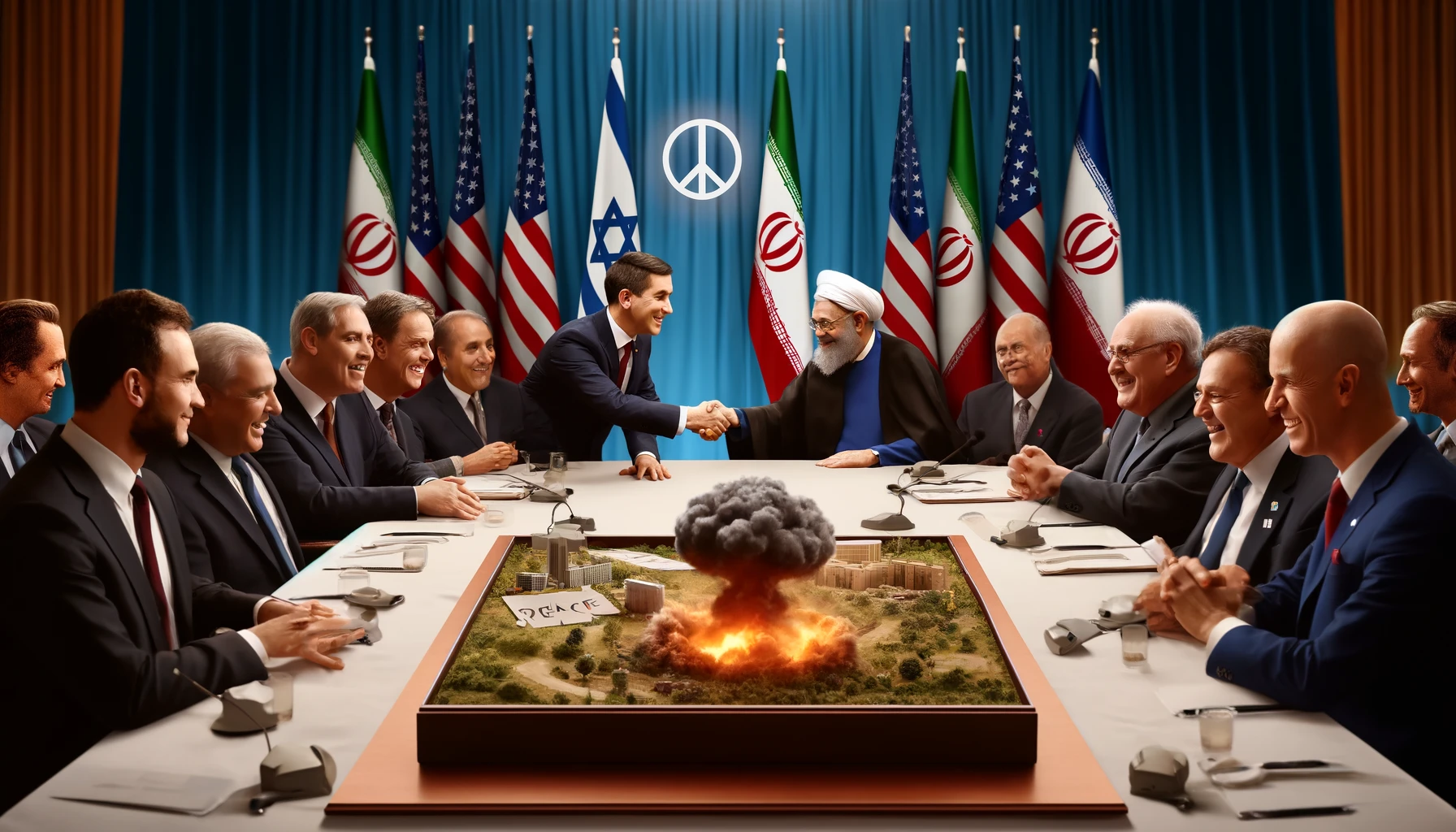In an unprecedented move that has left the global stage both baffled and intrigued, officials from Iran and Israel have reached an accord, sealing it with a groundbreaking agreement to conduct solely “peaceful explosions” in their respective territories. This bold initiative stands as a novel approach to conflict resolution, with both nations committing to a strategy of collaborative and harmonious demonstrations of military might, without direct confrontation.
Iran and Israel, despite not sharing a border, have often been at odds on many fronts. Yet this agreement marks a turning point, a venture into a form of engagement rooted in a baffling paradox — sustaining peace through the art of controlled and amicable blasts.
“The essence of enduring peace is mutual understanding and respect,” declared one Iranian official, moments after giving a thumbs-up to a strictly reconciliatory missile launch. Israel’s representatives, too, echoed this sentiment, affirming their commitment to a path of vigorous, yet peaceful, expressions of deterrence.
A central feature of the treaty includes the founding of a joint supervision panel, tasked with the intricate job of curating the spectacle and aesthetics of each explosion. This committee’s mandate ensures that every blast, set off in the name of peace, enhances the scenic beauty of the region and adheres to mutually agreed-upon limits of peaceful decibels.
Furthermore, both nations have conceded to a timetable of synchronized detonations. This schedule not only facilitates a harmonious sequencing of the conciliatory kabooms but also helps ordinary citizens arrange their daily routines with the knowledge of when the next benign explosion is expected.
What has raised eyebrows, perhaps more than the agreement itself, is the innovative push by both countries to transform these non-aggressive displays of firepower into a grand tourist attraction. A joint tourism campaign invites the intrepid and the peace-loving to experience what has been branded as the world’s inaugural “combat-lite” pyrotechnic extravaganza. The official promotion proclaims, “Imagine the excitement of a National Day celebration combined with a touch of Middle Eastern geopolitical zest.”
The pact also includes an unorthodox cultural exchange, where following each benign bombardment, the nations exchange culinary delights — a symbolic act of goodwill often finished with an urgent scurry to shelter. “The subtle flavors of a Persian halva or the sweet layers of Israeli rugelach act as ambassadors of goodwill, moving us closer towards amicable relations,” remarked an anonymous official from the shadows of a fortified bunker.
Skeptics and cynics have not withheld their scorn, quickly pointing out the oxymoron at the core of the approach — that peace and explosions might be fundamentally incompatible. Still, proponents counter with optimism, suggesting that this is an advance in the ongoing symphony of Middle Eastern geopolitics, albeit one performed in a bewildering crescendo of controlled detonations.
As this audacious experiment in conflict management unfolds before the world’s eyes, it offers both a sliver of hope and a fresh, albeit bizarre, chapter in the history of diplomacy. Will these “peaceful explosions” set the stage for genuine dialogue between Iran and Israel, or will they be but a footnote in the extensive annals of their complex interactions? Only time will chart the course of this peculiar agreement’s legacy in the tapestry of peaceful — if explosively so — coexistence.

